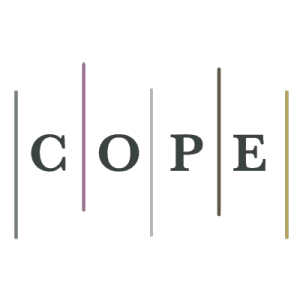The Journal of Humanities and Social Sciences Research (JHSSR) is an open access, independent, peer-reviewed, international, and multi-disciplinary journal designed for advancing the field of humanities and social sciences research.It is indexed in major academic databases
JHSSR also acts as a forum for reflective and critical thinking on innovative research. The journal is concerned with showcasing new and diverse international and innovative research that uses rigorous methodology that focuses on theory, policy, practice, critical analysis, and development analysis of issues that influence humanities and social sciences education.
JHSSR has its core principles:
- innovative research
- engagement with theory; and
- diverse voices in terms of authorship.
The journal is overseen by a senior editorial board, assisted by an International Advisory Board, a highly acclaimed Editor-in-Chief and a Chief Executive Editor who are international scholars with a wide range of expertise in the subject areas related to the journal.
The journal welcomes original research articles, review articles and brief communications showing the advances made in different areas of Humanities and Social Sciences.
The Journal of Humanities and Social Sciences Research (JHSSR) accepts unpublished original manuscripts as per the journal’s scope.
JHSSR publishes:
Research or Empirical, Short-communication, Opinion, Concept, Reviews and Book reviews.
- Research or Empirical Articles
Research or Empirical papers use quantitative or qualitative research methods. Authors are encouraged to contextualize their argument, when possible, by citing from existing debates and discussions previously published in JHSSR and by sharing how the results of your manuscript contribute to previous published articles on related issues. These links build a sense of continuity and foster scholarly dialogue within the journal.
Empirical research should demonstrate high rigor and quality. Original research collects and analyses data in systematic ways to present important new research that adds to and advances the debates within the field of humanities and social sciences. Articles clearly and substantively contribute to current thought by expanding, correcting, broadening, posing questions in a new light, or strengthening current conceptual and/or methodological discussions in the subject areas of the journal. We especially welcome new topics and issues that have been under-emphasized in the field. These articles are structured following the IMRAD style, and are usually between 6000 - 7,000 words excluding references and tables.
Short Communications are short papers that present original and significant material for rapid dissemination. For example, a Short Communication may focus on a particular aspect of a problem or a new finding that is expected to have a significant impact.
As they are concise articles, they are usually no longer than 3,000 words (7-8 double spaced pages). They do not cover in detail background information about the problems treated or the applications, rather they provide key pointers to the reader. The work reported needs to be technically sound, innovative and significantly unique, advancing the state of the art.
An opinion or perspective is based on ideas, opinions, and insights, and hence does not follow a strict structure like the IMRaD. As long as the ideas flow logically, the author is free to structure the article as he feels. Broadly, these articles have an abstract, introduction, a few body paragraphs, and a conclusion.
Opinion articles present the author’s viewpoint on the strengths and weaknesses of a hypothesis or scientific theory. Opinion articles are generally based on constructive criticism and should be backed by evidence. However, opinion articles do not contain unpublished or original data. These articles promote scientific discourse that challenges the current state of knowledge in a particular field.
Opinion pieces are also relatively short articles, of around 2000-2500 words, typically with a short abstract of about 150 words, at least five references, and one or two figures or tables.
Concept papers are summaries of projects or issues that reflect the interests, experience and expertise of the writer or organization. Concept papers generally serve the purpose of providing in-depth discussion of a topic that the writer has a strong position on, usually with the intent of obtaining funding for that project from donors. The terms "concept paper" and "proposal" are often used interchangeably as they can be used for the same function. It doesn't involve practical experimentation but instead relies on the researcher analysing available information on a given topic.
Ideally, a concept paper should be 3 to 6 pages long and explain the "why" and "what" of the research project.
Review papers are high scholarly contributions articles written by experts who not only know very well the research and technical developments in the field but also are able to critically examine the state-of-the-art and express informed views and provide ideas of future developments of the research topic. They demonstrate rigor and quality.
Submissions must be situated within relevant literature and can be theoretical or methodological in focus. Review/Essays are 3,000 to 4,000 words excluding references and tables.
Book Reviews include critiques of recent books (published within the past three years), related to the scope of the journal. They are usually between 750 and 1,200 words. Authors must include a JPG (min.600 dpi) of a cover image of the reviewed item.
JHSSR offers two special issues annually that address current issues related to the journal’s scope Please communicate directly with the Chief Executive Editor’s office at [email protected]



